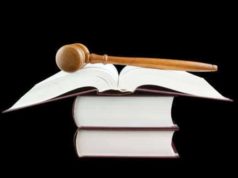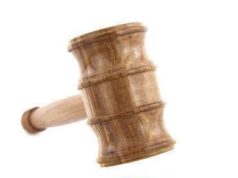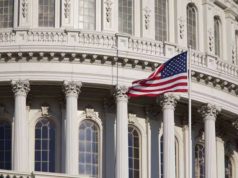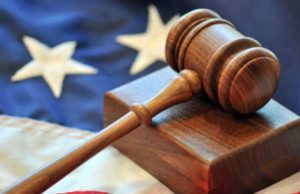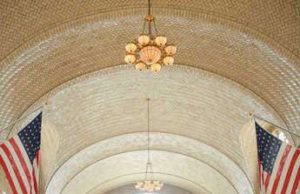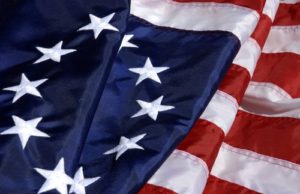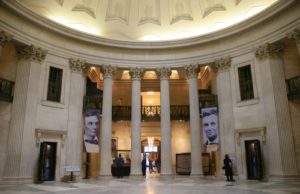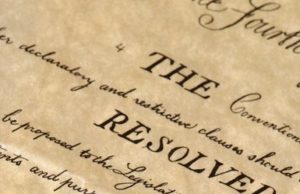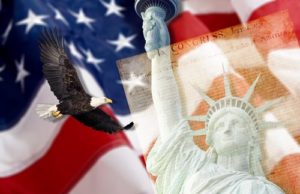Table of Contents
- 0.1 Introduction
- 0.2 Background of the case and the role of the Supreme Court
- 0.3 10 Important facts about the Supreme Court’s limited number of cases
- 0.4 Impact
- 0.5 Judicial gridlock
- 0.6 Diminished importance of precedent
- 0.7 Political fallout
- 0.8 Expertise in limited areas
- 0.9 Conclusion
- 1 Reasons for the Shrinking Supreme Court Agenda
- 2 Approval and Criticism of the Declining Supreme Court Decisions

Introduction
The Supreme Court of the United States is the highest court in the nation and is responsible for interpreting the Constitution and the application of federal law. Due to the paramount importance of its decisions, the Supreme Court’s role in American politics and the legal system is one of the most widely scrutinized and criticized. In recent years, there have been concerns raised by legal experts and political analysts about the Court’s lack of action in reviewing important cases. This article will analyze criticisms made against the Supreme Court about its limited number of cases reviewed, how that impacts the US legal system, as well as the wider impact it has on American politics.
Background of the case and the role of the Supreme Court
The Supreme Court of the United States, otherwise known as SCOTUS, is the final court of appeal in the federal court system, with the power to hear and resolve all matters of federal law and legal disputes. The Court is composed of nine Justices, who are appointed for life by the President and must be confirmed by the Senate. Since the Court’s decisions carry over into law and have significant political implications, the Justices are chosen very carefully and must meet certain qualifications, not least a substantial legal background.
The Court is primarily responsible for interpreting the Constitution, which serves as the foundation for American law. The Court considers cases on a range of topics, including civil liberties, constitutional rights, and disputes between states. The Court’s decisions can have significant consequences on political controversies, for example, the ruling of Roe v. Wade which legalized abortion in the US, or Obergefell v. Hodges, which legalized same-sex marriage.
10 Important facts about the Supreme Court’s limited number of cases
Here are ten important facts about the Supreme Court’s limited number of cases, and how it has impacted the US legal system and American politics:
- The Court is seeing an unprecedented low number of cases
Between the years of 1953 and 2002, the Supreme Court fulfilled its responsibilities as final arbiters of the law by deciding cases in an average of 150 per year. However, in 2017 and 2018, SCOTUS reviewed only 62 and 68 cases respectively, the lowest number since the 19th century.
- The Thomas and Alito Effect
Two Justices appointed by former president George W Bush in the early 2000s, Antonin Scalia and Samuel Alito, are sometimes cited as contributing to the Court’s decrease in cases. The two Justices’ strict interpretive practices and aversion to interpreting Congressional text have influenced other members of the Court, leading to a greater reluctance to take on cases.
- The rise of preliminary litigation
The primary reason for the decrease of cases is the increase in preliminary litigation. Before a case is taken up, it must be cleared by an intermediary court, which significantly slows down the process of clearing petitions for review. This has been made possible by legislative developments which have expanded the number of intermediate courts.
- The impact of administrative law
Administrative law, which involves the regulation of government agencies, is now the most common area of dispute brought to the Supreme Court. The courts’ increased involvement in administrative law is due to the growth of government regulation and the powerful National Administrative State.
- The political nature of the Court
Increased partisan conflict in Washington has a significant impact on the appropriations of the Supreme Court, which has been somewhat reduced in recent years. However, decisions made by the Court can still be exploited by politicians and used in campaign rhetoric, leading to a political fallout.
- Biographical determinism
The increasing age of the Justices is another factor contributing to the slow pace of decision-making in the Supreme Court. Only two Justices are under the age of 60, while the others are seniors in their 70s or older. The relative lack of youthful personalities on the Court is significant, as younger judges are more likely to be more inventive in their decision-making.
- The rise of circuit splits
This refers to disagreements between the intermediate courts on different cases, resulting in multiple jurisdictional decisions on various issues. Circuit splits result in forum-shopping, where litigants choose specific courts to hear their cases that will be more likely to push the case onto the Supreme Court’s docket. The rise of circuit splits has been a significant factor contributing to the Supreme Court’s decreased cases.
- The cost of appearing in the Supreme Court
A Supreme Court case can cost attorneys and litigants tens of thousands of dollars, making it an expensive proposition. Many litigants may be discouraged from appealing to the Supreme Court, especially smaller companies that cannot afford to go through such a demanding trial.
- The nature of case selection
Cases that could have a significant impact on American law or politics, such as whether the Arctic National Wildlife Refuge should be opened to oil drilling, can often be excluded from the Supreme Court’s docket. This results in a situation whereby important cases remain unreviewed.
- The Court may be slow to take on non-urgent cases.
The Supreme Court may have slowed down its review process in terms of non-urgent matters. The Court seems particularly focused on critical issues, especially those with significant national importance, often leading to ignoring some less contentious cases.
Impact
The Supreme Court is responsible for overseeing Congress and the other branches of government regarding their adherence to the Constitution and the rule of law. The Supreme Court’s limited number of cases has created new challenges, and its impact is felt in many different ways across the legal system.
Judicial gridlock
One of the primary consequences of the Court’s decreased caseload is judicial gridlock. With fewer cases being addressed, an increasing number of disputes remain unsolved, leading to a backlog in the judicial system. This slows down the appeals process for all types of cases and shows the importance of the Court’s involvement in American legal affairs.
Diminished importance of precedent
The Supreme Court’s decisions set precedents that lower courts use in their own cases. With fewer cases being reviewed by the higher court, the value of precedent is reduced, leading to lower courts basing their rulings on less-restrictive standards and potentially conflicting with other court decisions.
Political fallout
The Supreme Court is a political entity, and its products affect political decisions, particularly in the United States. When the Supreme Court declines to take a case, it often reinforces the Court’s prior decision. The lack of new cases regarding high profile and significant legal issues can be seen as a way of the Court implicitly “taking sides” in political hot topics.
Expertise in limited areas
With the Court taking fewer cases, it results in a more concentrated area of expertise in specific cases. An excellent example of this is the expansion of administrative law cases, as it increases the Court’s experience in and knowledge of administrative law.
Conclusion
The Supreme Court of the United States has the power and responsibility to interpret federal law and the Constitution. However, due to the limited number of cases it takes on, the Court’s impact on the US legal system and American politics has been significantly reduced. However, w its smaller caseload, the Supreme Court can focus on individual cases and provide more thorough and thoughtful opinions.
The U.S. Supreme Court, the highest judicial body in the United States, was designed and structured to not only be the leader of Federal judiciary proceedings but to be the third tier of power, overseeing the legislative and executive branches of government. Its job is to hear cases that have been appealed up to the Supreme Court or cases that challenge the interpretation of Federal law.
The Supreme Court is made up of one Chief Justice and eight Associate Justices, who have life tenure and serve until death, resignation, retirement, or impeachment. When potential Court cases are reviewed by the Justices of the Supreme Court, if any four of the nine Justices want to hear a case, the case will be formally heard in the Court. Recently, however, the Court has come under much criticism for hearing progressively fewer cases, specifically since the 1980s.
Reasons for the Shrinking Supreme Court Agenda
Since the inception of the U.S. Supreme Court, the number of cases heard by the Supreme Court rose consistently every year until the 1980s, when it heard approximately 150 cases a year. As of 2009, the number of cases heard by Supreme Court Justices every year has dropped to about half as many. In fact, the 75-80 cases that are heard by the Court are taken from a list of as many as 8,000 proposed cases.
As concern over the dwindling Supreme Court case docket reached public attention, Yale Law School held a conference to determine the reasoning behind it. Although the exact reasoning was not determined without any doubt, there were several theories that were created to explain it. Some theories accused the current Justices of choosing fewer cases to make a court decision, while others believe that the Supreme Court clerks are to blame. Other theories and reasoning behind the shrinking list are that the Justice Department has begun to make fewer appeals and even Congress was blamed for not making legislation “vague” enough to be left up to Court interpretation.
One of the most convincing arguments, however, came from a researcher at the University of Minnesota Law School, who claimed that the five replacement Justices that took over in 1986 clearly voted to hear cases far less often than the Justices that preceded them. As the 1980s came to a close, data suggests that the drop off in the number of Supreme Court cases is undeniably staggering, leading many to believe that the new Justices are to blame.
The biggest difference was between Justice Byron R. White and his replacement, Justice Ruth Bader. White voted to hear an average of 216 cases per year, a considerably larger number than Bader, who only voted to hear 63 cases in 1993. Additionally, Justice Clarence Thomas only voted to hear 72 cases, as opposed to his predecessor, Justice Thurgood Marshall’s 125 cases. Justice David H. Souter voted to hear 83 cases, while his predecessor, Justice William J. Brennan Jr. voted to hear 129. Interestingly enough, even the justices who remained active after the personnel change in 1986 voted to see a fewer amount of cases, though the drop-off in numbers was not quite as steep as the new Justices.
Throughout the 1990s, the trend continued and reached a new low in the decade to follow, as only 70 cases were heard total in 2007. It should also be noted, however, that between the years of 1989 and 1991, the number of Justices other than the Chief Justice that made the Supreme Court decision pool grew from six to eight members. This may have also been a contributing factor to the smaller number of cases that received a court decision, according to Kenneth W. Starr, who was a former appeals court judge.
Another possible contributing factor often theorized is the number of petitions filed by the Solicitor General, the representative of the Federal Government within the Supreme Court, has shrunken from 29 to about 16 in the four terms before the previous term.
Approval and Criticism of the Declining Supreme Court Decisions
Many scholars today believe that the Supreme Court is not working at its fullest capacity and should be more proactive in discussions that are held at a lower court level. They feel that it is their responsibility to hear a case and reach a decision to help interpret the law of the United States. There are, however, many respected opinions that support the decline in Supreme Court decisions.
Many people believe in the importance that a Court decision should only be made if truly necessary, otherwise the other branches of government or the lower courts will perform an adequate enough job in enforcing such decisions as needed. Trusting the Supreme Court in deciding which cases to hear is just as important as trusting the decisions they make in the cases that they do hear.


